How to Grow Herbs: An Herb Gardening Guide for Beginners
Starting an herb garden is a rewarding way to begin (or expand) your gardening knowledge. Once you learn how to grow nutritious herbs, you’ll be enjoying their beauty and flavor for years to come! So…what are the basics of herb gardening for beginners?
With these helpful tips you can create your very own herb garden. Whether it is an extension of your vegetable garden, potager or kitchen garden, and even at home in a sunny windowsill, you’ll learn how to grow the best herbs, easily!

Where should to begin if you have zero experience growing herbs – or any plants? How do you get started?
The best place to begin is with the basics. Given a little background and a few easy planning steps, you can be well on your way to creating a beautiful and useful herb garden this growing season!
Types of Herbs to Grow
An herb is a plant that offers roots, seeds, flowers, or fruit as an enhancement to food or medicine. Herbs are often used from a medicinal perspective to support the healthy functioning of various systems throughout the body.
There are two main categories of herbs.
- Culinary herbs – oregano, basil, cilantro, parsley, tarragon, etc. – provide fresh and flavorful ingredients to spice up your favorite dishes and are some of our favorite herbs to grow.
- Medicinal herbs – chamomile, calendula, echinacea, yarrow, etc. – can be made into teas, tinctures, lotions, and more to address a variety of common ailments. Healing herbs can be used for both health and wellness purposes.
Don’t forget about the pollinators! Some of our herbs are grown to draw in the pollinators like bees and butterflies. I love to add flowers that attract pollinators in our herb and vegetable garden beds.
No matter the type of herbs you decide to grow, there is always more to learn about these plants and their uses. Remember to start small, and watch as your desire to know (and grow!) more herbs evolves.

How to Choose Plants for Your Herb Garden
Before you can stick your hands in the dirt, you should decide which plants grow. The three most important things to consider when growing herbs is how much sunlight and space you have to offer, and the quality of your soil.
Most herbs aren’t too picky about their growing conditions. But, setting yourself up with plants that are a good fit for your environment will prevent you from wasting money, time, and energy.
Annual herbs vs perennial herbs
Some herbs are perennials, meaning that they come back year after year. And others are annuals which will need to be replanted each year.
There’s something so exciting to watch perennial herbs come back to life each spring. Some of my favorites are oregano, chives, and sage. Be sure to check if a particular perennial variety is hardy to your specific growing zone.
Easiest Herbs to Grow
If you already know the basics of gardening and you’d just like to get going with some easy-to-grow herbs, this section is for you!
Some herbs (mostly medicinal) are just plain tricky to grow. Fortunately, there are several wonderful herbs that even those with a black thumb should try!
These easy-to-grow herbs include: basil, sage, thyme, catnip, dill, calendula, and chamomile. I love this list of herbs because not only will these be easy to grow, but they will also give you a well-rounded supply of both medicinal and culinary herbs to experiment with throughout the season.
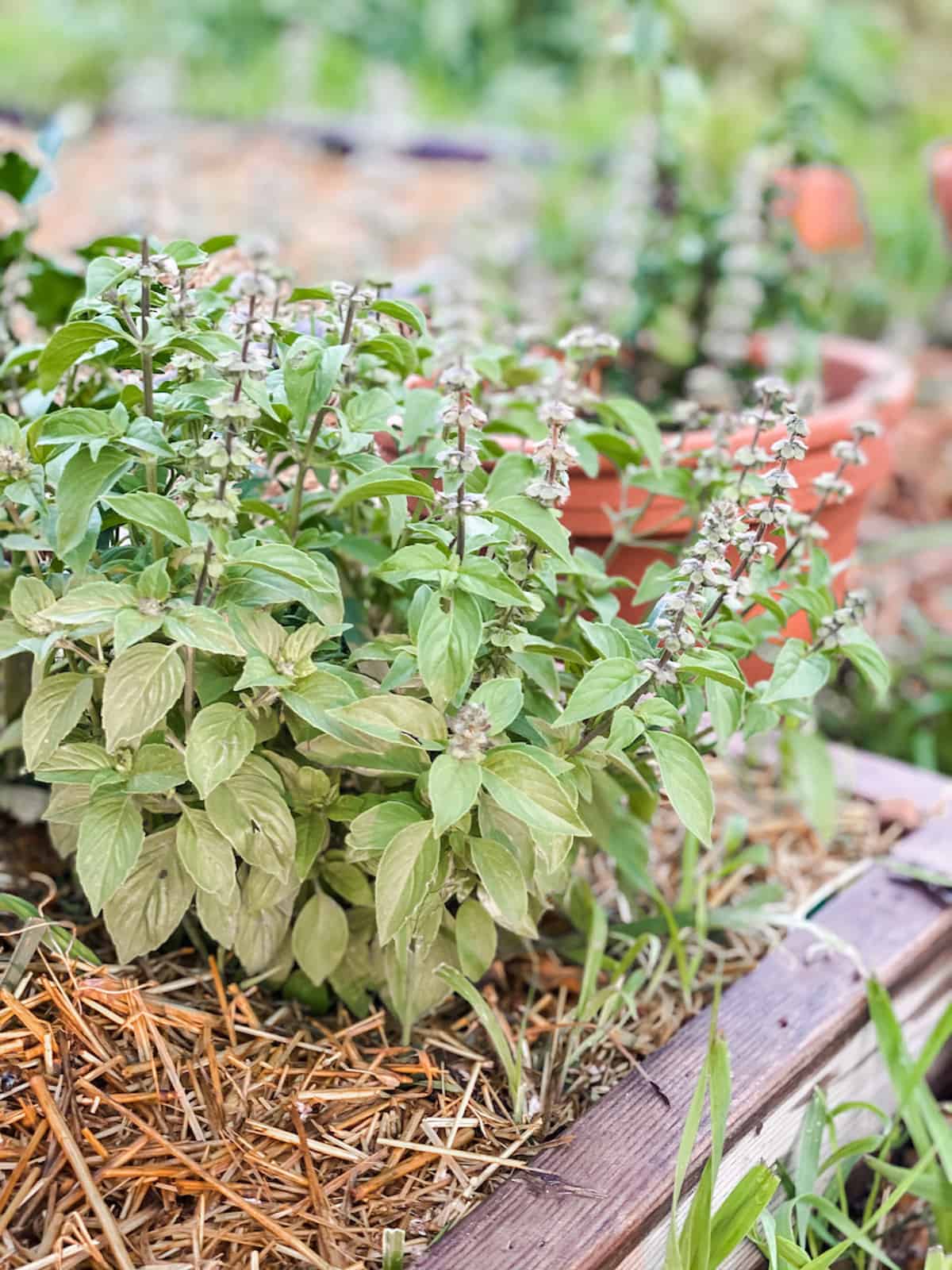
Sunlight Requirements
All plants need light. But, different plants require varying degrees of sunlight. Some herbs want to be in the hot sun all day, while others will turn yellow and droop with more than a few hours of direct sunlight.
Before you head to the nursery to purchase your plants, observe how much sunlight your garden plot gets each day.
You’ll want to know if your garden spot (or balcony) gets:
- Full sun (about 8 hours of sunlight)
- Partial shade (a combination of morning, afternoon, or evening sun)
- No direct sunlight
Don’t worry about being exact. Simply take note of how much sunlight your garden area receives.
A few popular sun-loving herbs include: basil, echinacea, oregano, stevia, lavender, and thyme. They will thrive in a warm, sunny spot that gets 6-8 hours of direct sunlight every day.
And for those needing shade-loving herbs to grow, you can include these in your garden: mint, chives, parsley, lemon balm, and cilantro.
You don’t need complete shade for these herbs to thrive. They will do quite well in morning or evening sun and afternoon shade.
Do your research before picking out which plants to grow in your herb garden. Making a simple chart always helps me stay organized when planning my garden.
List the herbs you want to grow and make notes about their needs. After that, it should be clear which herbs would work best for the environment you can provide.
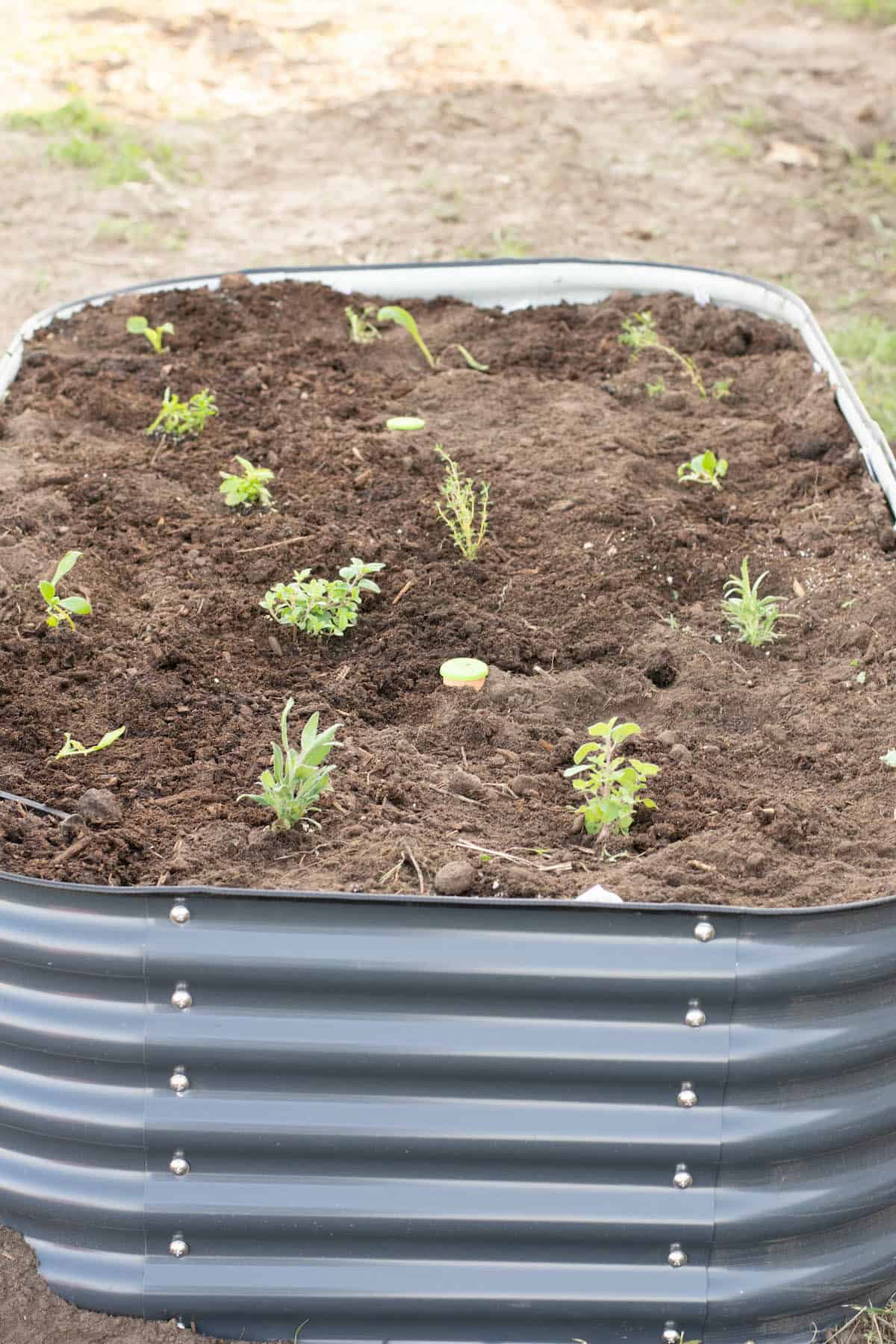
Space Requirements
The other important factor to consider when planning an herb garden is space. Many herbs spread and grow quite large. Any good book on growing herbs will go through each herb and tell you exactly how much space it needs to grow.
I like to map out my garden on graph paper. Your measurements don’t need to be perfect. Err on the side of leaving too much space between your plants. You can always go back and fill in gaps once your plants become established.
Herbs to Grow in Containers
You can grow herbs in containers (and some indoors), too. If you live in an urban area, these herbs will grow well in planters on a porch or balcony:
- Mint will take over your garden if you let it. Growing it in a container will prevent it from overcrowding other plants.
- Sage needs well-draining soil, and placing it in a larger planter with the right soil will give you an abundant sage harvest.
- Parsley doesn’t like to be left in the summer sun. Growing parsley in a container will allow you to move it out of the sun when it’s had enough.
A few other herbs that grow well in small pots include: chives, oregano, basil, and coriander.
I love growing these herbs in container gardens because I have more control over their growing conditions. Not to mention, growing herbs on the porch gives you easy access to fresh herbs while making a meal!
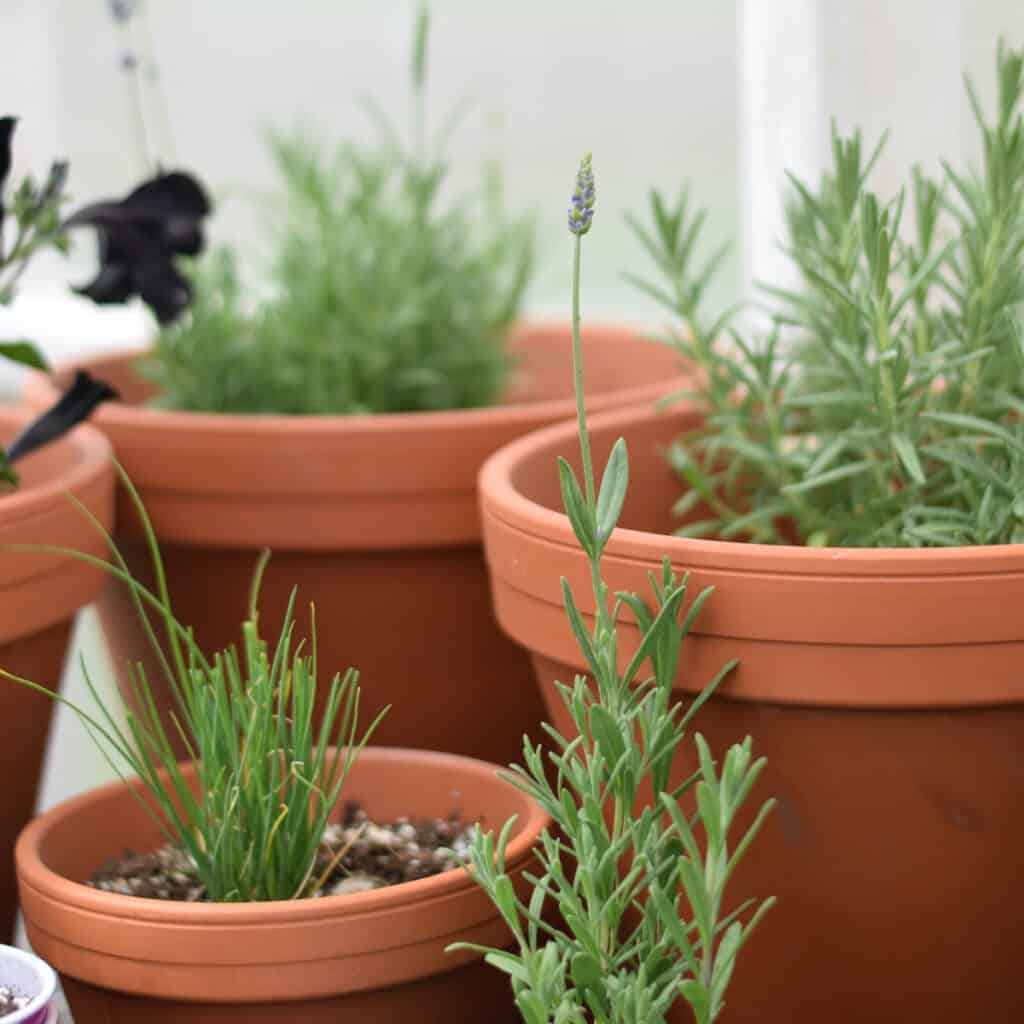
Minor Soil Improvements
Some herbs are particular about soil conditions. But, most simply want well-draining soil. If you grow herbs in containers, you’ll want to ensure that you have good drainage, so creating drainage holes at the bottom of the container is key.
A good way to improve soil drainage is to add organic matter or compost around your herbs. Do this prior to planting. If your plants are already in the ground, simply place a layer of compost around your herbs and use a pitch fork to carefully mix it with the soil.
Want to save this?
This will improve drainage and prevent your herbs from sitting in water – which increases the likelihood of root disease.
Making these minor soil improvements is one of my favorite things to do for my herbs! They always look peppier the day afterwards.
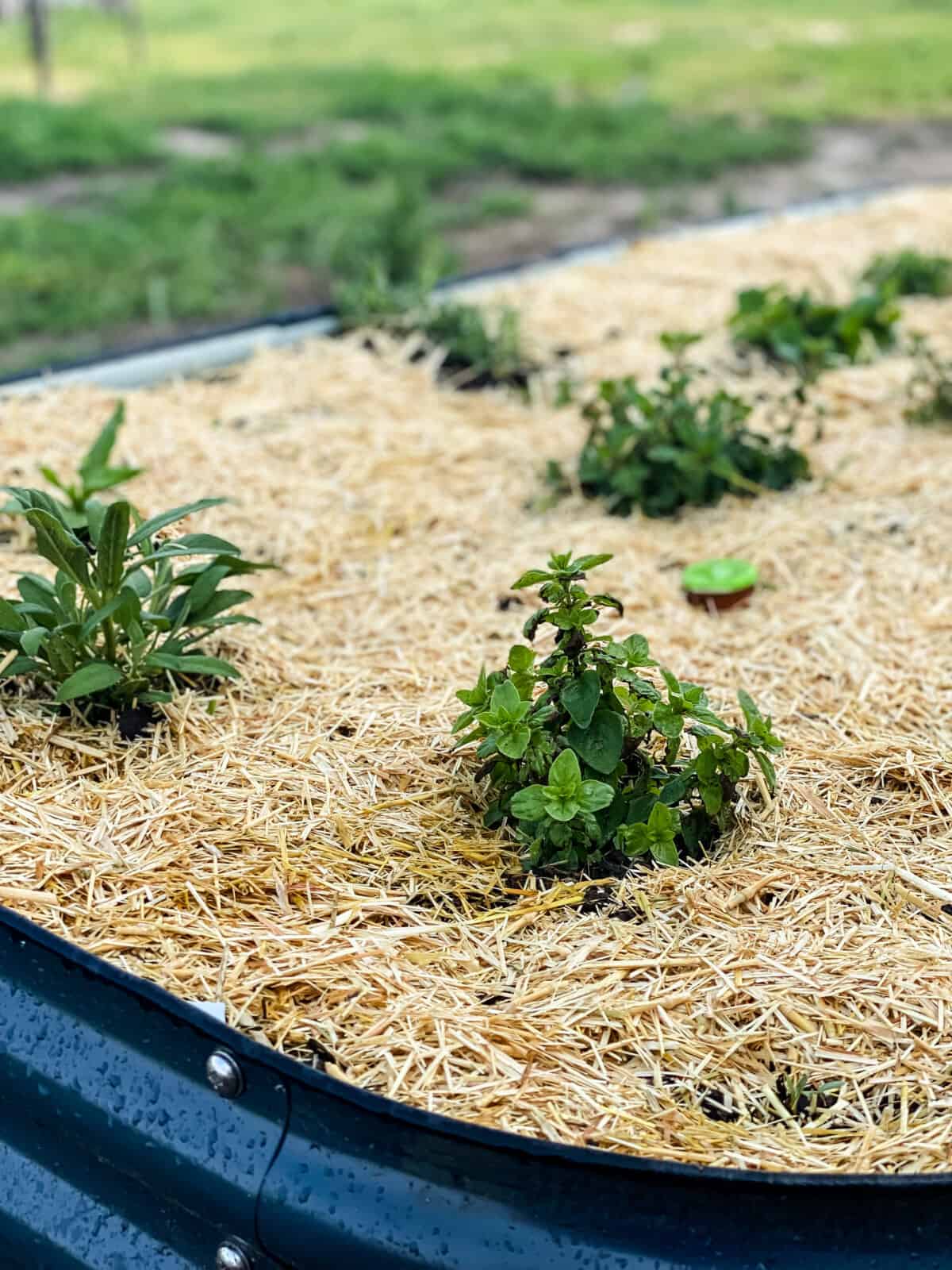
Planting, Growing, and Harvesting Herbs
Now that you’ve done all your prep work, you are ready to plant herbs in your garden (yay – my favorite part!). Watching as your plants settle in is a delight.
Looking for herbal recipes? Check out Growing and Using Herbs at Home.
When to Plant Herbs
The best time of year to plant herbs is typically in the spring, although in some places you can create a fall herb garden, too.
For the most part, when to plant herbs will highly depend on the type of herbs you are growing and whether or not you are starting from seed or transplanting.
From Seed
Herbs can be challenging to grow from seed. They are often slow growers with a variety of needs as seedlings. I recommend starting with young, established plants from a local nursery.
Today, nurseries carry a wide range of culinary and medicinal plants.
If you are on a budget, there are a few herbs that do quite well grown from seed. These include:
- basil
- cilantro
- chives
- oregano
- chamomile
- calendula
We love to purchase most of our garden seeds from High Mowing Organic Seeds. They have always been great quality and high germination rates.
Start your seeds indoors 10-12 weeks (or even earlier if possible) before the last frost date. You can start herb seeds in a greenhouse, but a really sunny window will do just as well. I recommend using grow lights if possible to prevent leggy seedlings.
Keep the soil moist as you wait for sprouts to appear. Once your plant has more than two rows of leaves on the stem (and the weather is right) you can transplant it in the garden.

Transplanting
I prefer transplanting herbs over growing them from seed. It saves time and energy, although it is the more expensive option. But using plant starts makes a great way to start herb gardening for beginners.
You can transplant most herbs into beds after the last frost date for your area. Hardier herbs like cilantro and parsley can be planted a few weeks before the last frost date as cooler temperatures won’t hurt them.
Basil, oregano, rosemary and lavender prefer warm weather. Wait until the ground warms to overnight temperatures of 50 degrees F to plant these outside.
Transplanting herbs is as simple as digging a hole in a bed or planter pot large enough for the plant’s root ball to fit comfortably. Cover the roots with soil and water generously for the first day or two after planting.
I like to buy organic and non-gmo plant starts from Azure Standard.
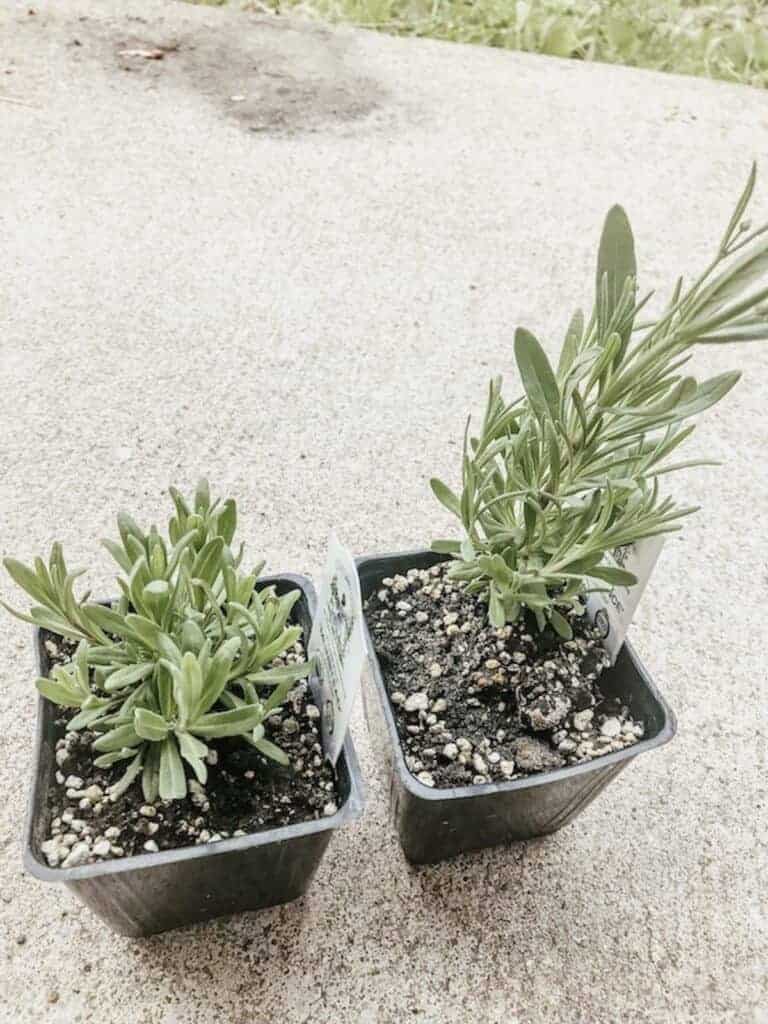
Herbs that Grow Well Together
Herbs make fantastic companion plants when grown alongside fruits and vegetables. They are aromatic and can help drive pests away from your garden vegetables.
Learn more about companion planting with herbs and vegetables here.
Herbs that grow well together will have similar needs. For example, sage is woody perennial that needs a full-sun location and some drying time between waterings.
Find plants with similar requirements to plant nearby – lavender, rosemary, and bay would make good neighbors for sage.
When you plant herbs with similar light, soil, and watering needs together, you are maximizing your harvest with happy herb plants. Plus, you will stay organized knowing who needs to be watered daily or less often.
Watering Routines
Some herbs want to be watered daily, while others need time to dry out between watering. Borage, echinacea, and sage don’t like too much water, while thyme, peppermint, and oregano like to be watered more frequently.
As you get to know these plants better, you’ll quickly grasp what they need and when. A good rule of thumb is to give your plants a big drink of water right after planting them, and then let the ground dry out before watering again.
It’s a good idea when just getting started with herbs to keep a few notes on how often your plants like to be watered. This will make it easier to develop a watering routine based on each herbs’ needs.
Harvesting Herbs
You can harvest herbs anytime throughout the growing season. In fact, you want to harvest the herbal leaves and flowerheads often. Frequently pruning your herb bushes will encourage more growth.
Pinch off any flower buds that appear on culinary herbs like basil or mint. This will also encourage the plant to put more effort into growing delicious, aromatic leaves.
Need cilantro for tonight’s dinner? Head on out and snip off some leaves.
That’s the beauty of growing your own herbs. As you become more familiar with the different parts of the plant that can be used for food or medicine, you will learn more about the various ways to dry and use herbs.
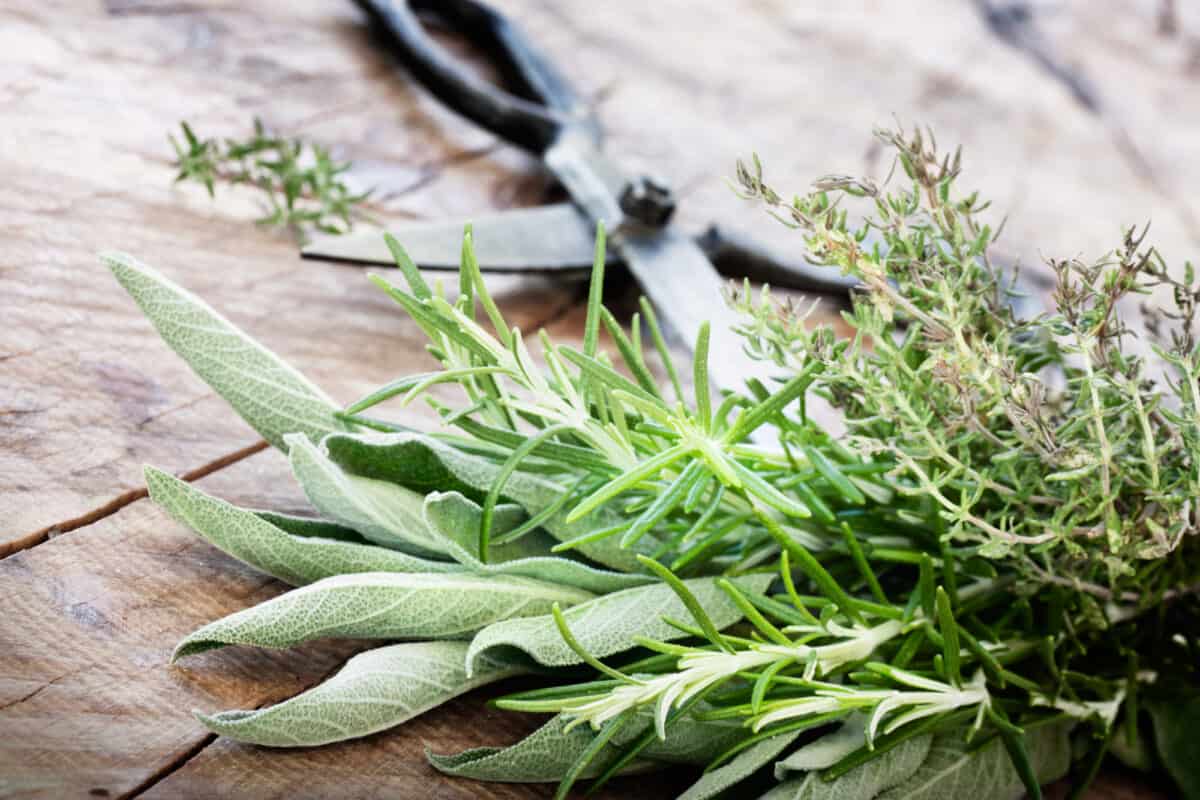
Experience Makes the Best Herbal Teacher
Any new venture comes with a learning curve. Gardening is no exception.The best teacher is experience. You may find that some herbal plants just don’t work for you and the conditions you have for growing them.
That’s been the case for me with lavender – no matter what I’ve tried I can’t get it to grow. But rather than giving up all together, I focus my efforts on herbs that I do grow well – chamomile, catnip, peppermint, lemon balm, and others.
Whether you are growing herbs in a container garden on a balcony or in a large open plot of land, with experience you can learn to grow a bountiful herb garden right outside of your back door.
Which herbs will try growing this year? Let me know in the comments below!
FAQ (frequently asked questions)
Some beginner gardeners have the most success with these easy to grow herbs: basil, sage, thyme, catnip, dill, calendula, chamomile, and oregano plants. In addition, some varieties in the mint family and the rosemary plant are great additions. Mint should be grown in its own large container because it is invasive.
Some different types of herbs require different soil conditions, some prefer regular watering and moist soil (not soggy), and some like to have the soil dry between waterings. But for the majority of herbs, well-drained soil is great.

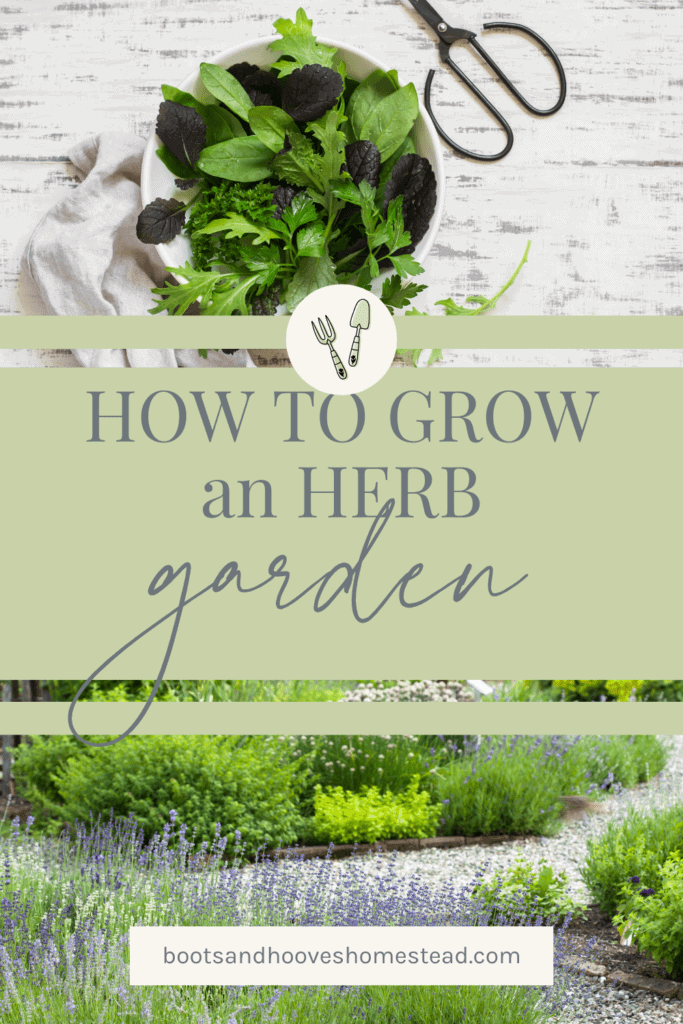




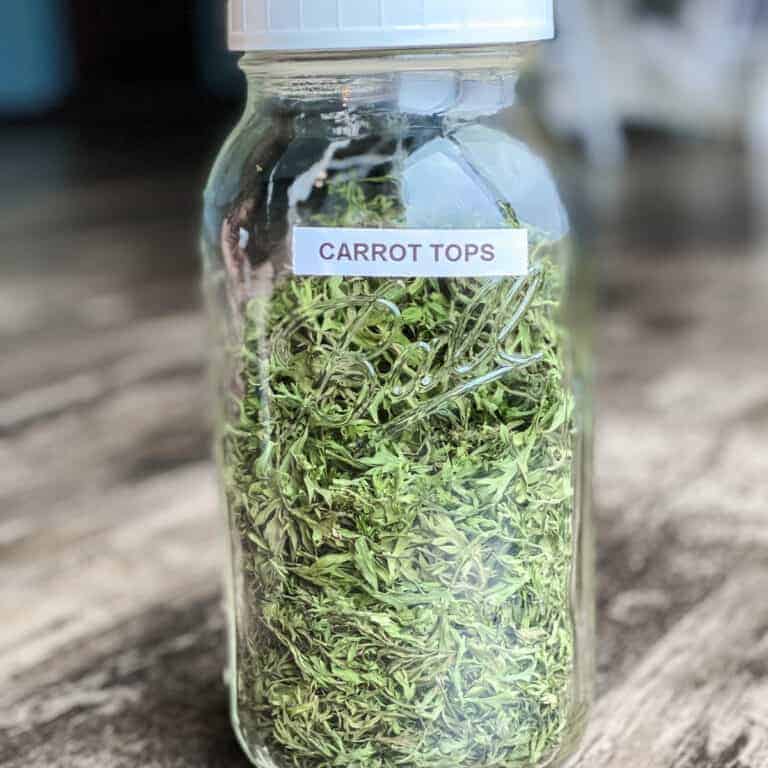
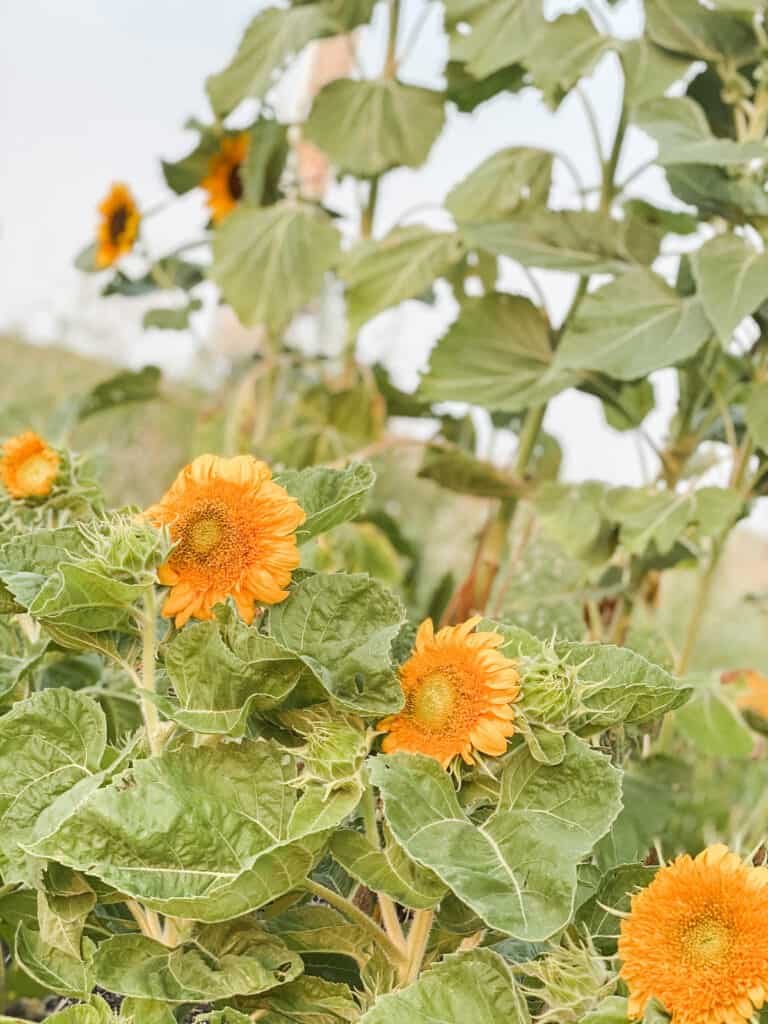
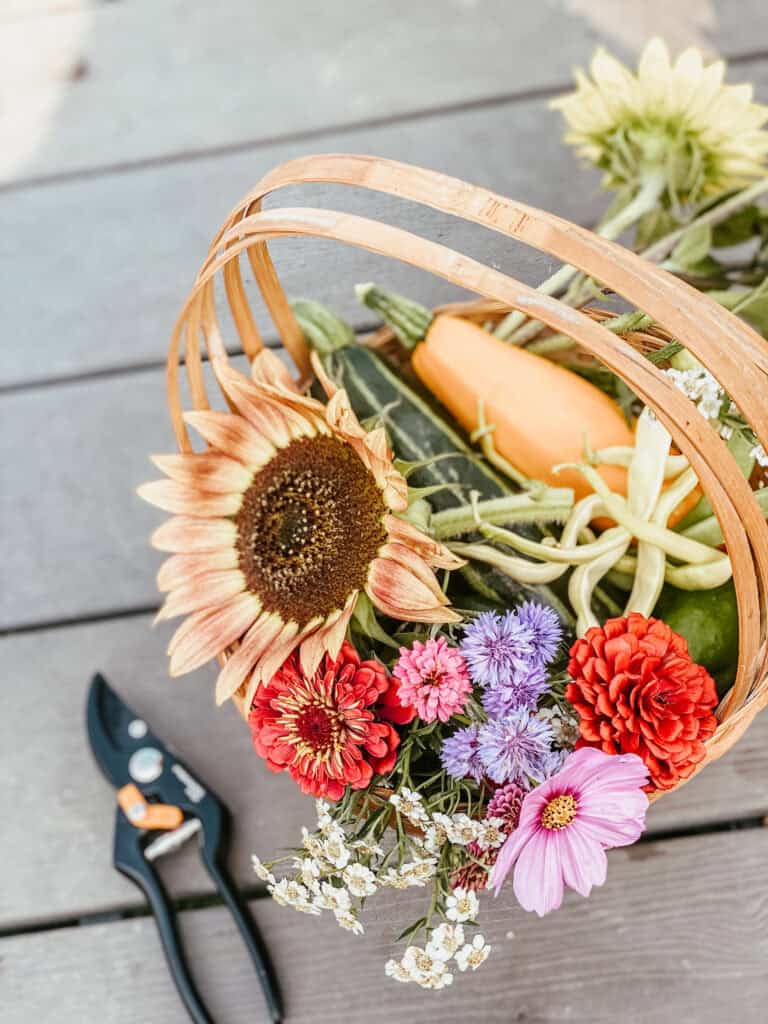
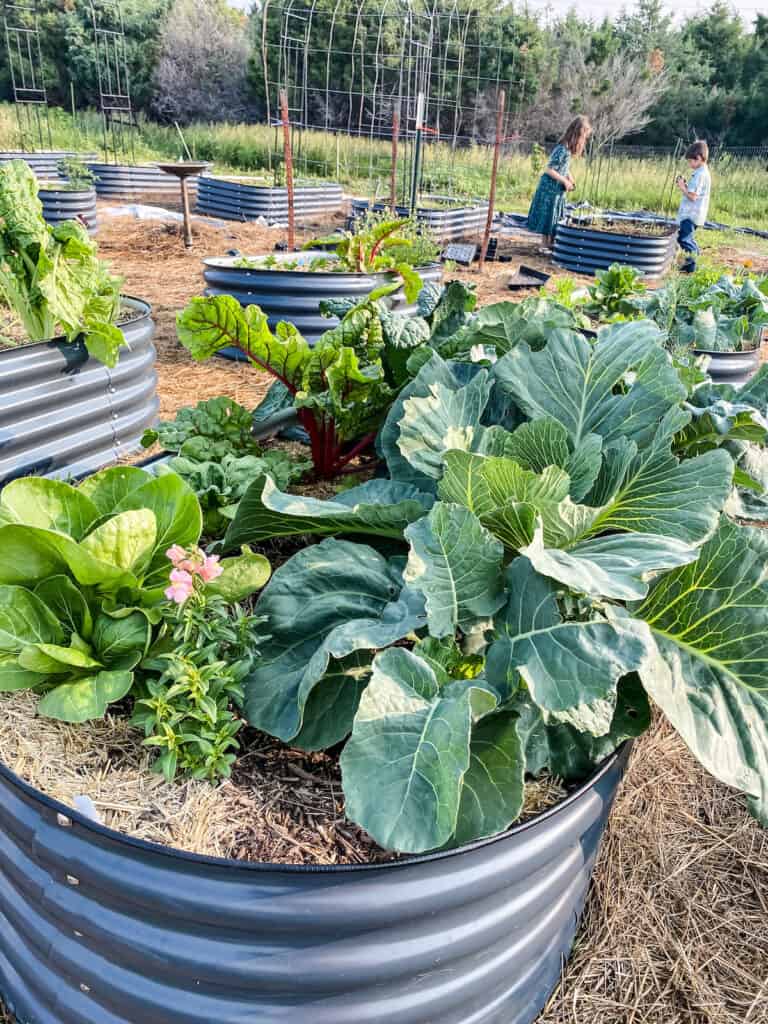
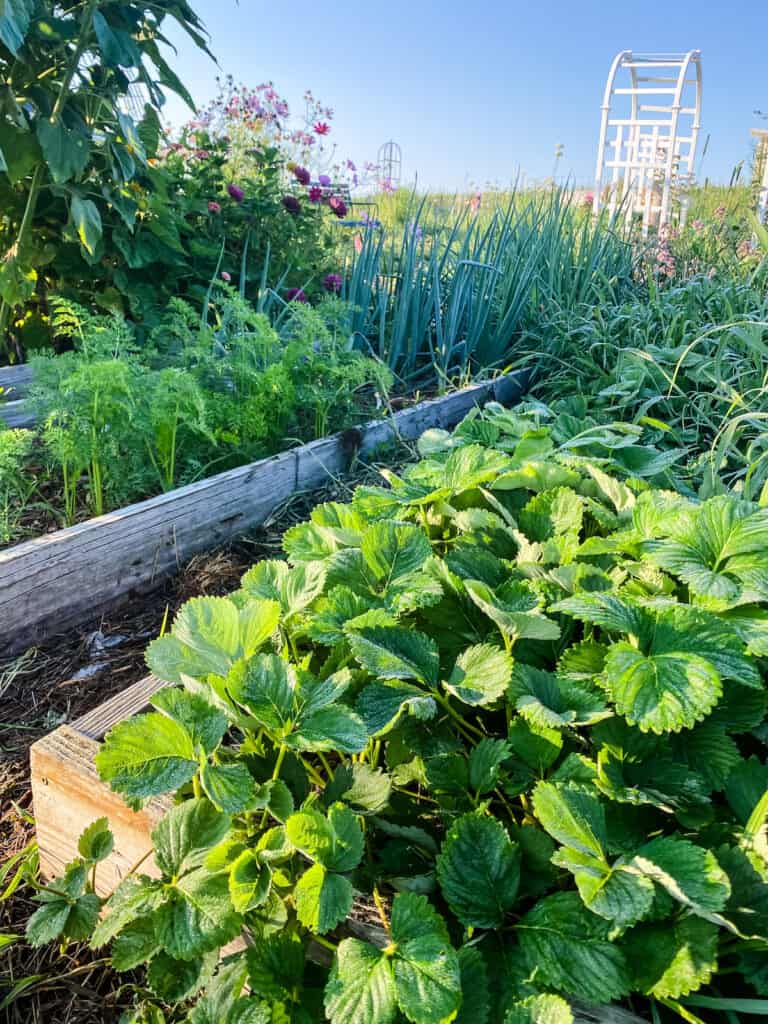
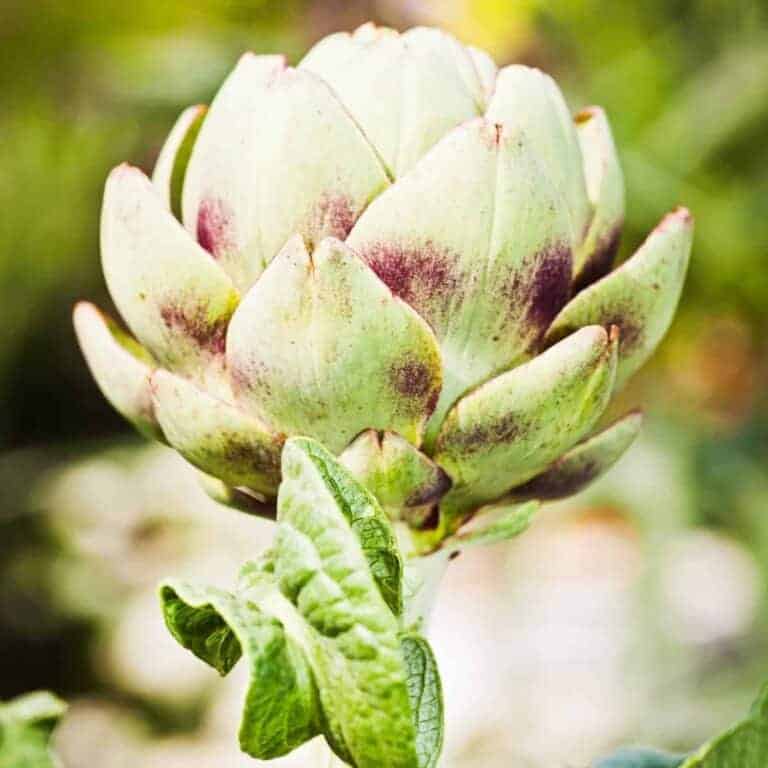
Very helpful info im starting a herb garden next spring me and my daughter was going to this spring but she passed away two days before Christmas last year sudden but im still going do one cause she wanted us to cause my grandmorher had one wish me luck i will use this blog for info thank you for sharing
Oh, I am so sorry about your loss! Thank you for sharing with me! 🙂
“I love these eco-friendly pest control ideas! Chemical pesticides have always worried me, so I’m excited to try the neem oil spray. Has anyone here tried companion planting? I’ve heard it works wonders for keeping pests at bay.”
We love companion planting! 🙂 I have some tips here: https://bootsandhooveshomestead.com/benefits-of-companion-planting/
Great guide for new herb gardeners. Practical tips and easy-to-grow herb suggestions. Very helpful information.
Eartheasy